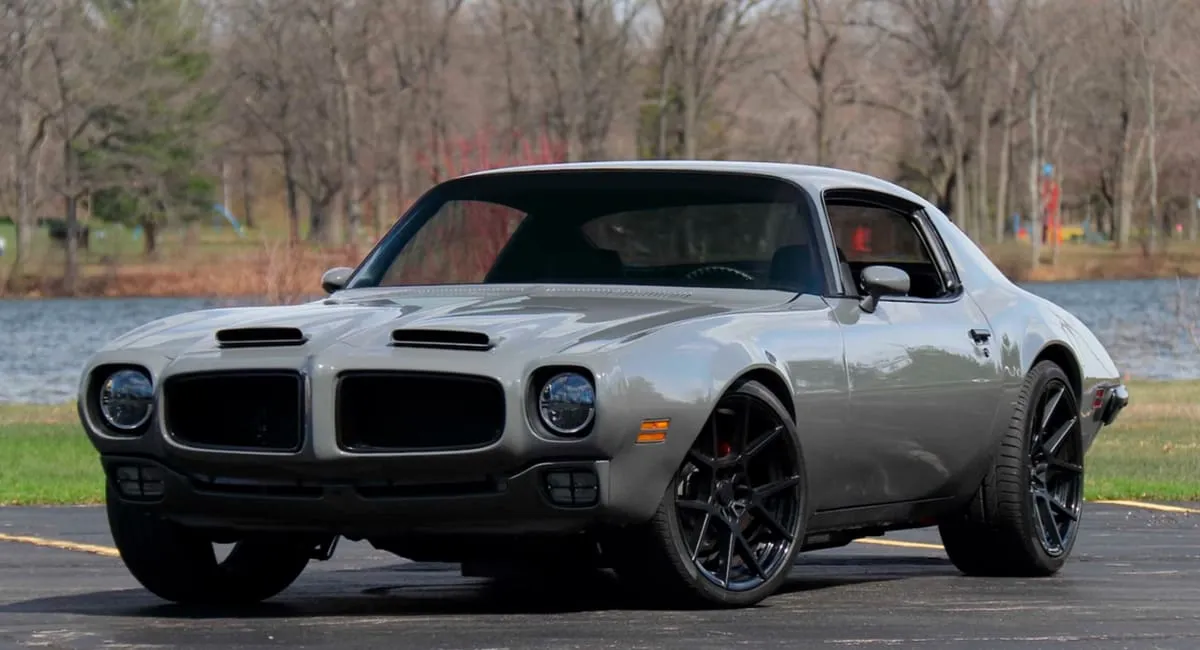The Lotus Europa is a sports car produced by Lotus Cars between 1966 and 1975. It was introduced as a mid-engine, rear-wheel-drive coupe that aimed to provide high performance and handling.
-1685868704x1024.jpg)
It's worth noting that the production of the Lotus Europa ended in 1975, but the name was later revived for a different model in the 2000s. Over the years, Lotus introduced different variants and updates to the Europa lineup. Notably, the Europa S2 featured improvements such as larger taillights, improved interior comfort, and more power. The Europa Twin Cam, introduced in 1971, featured the Lotus-developed 1.6-liter "big-valve" engine and enhanced performance.
-1685868725x1024.jpg)
1. Cultural Significance
Innovative Design
Europa's design, with its sleek and futuristic appearance, was ahead of its time. The low, wedge-shaped body and mid-engine layout set new standards for sports car design, inspiring other manufacturers to explore similar concepts.
-1685868743x1024.jpg)
Motorsport Achievements
While it wasn't as prominent in motorsport as other Lotus models, it still participated in various racing events and showcased the car's capabilities on the track. -1685868794.jpg)
It participated in various racing events, including the Le Mans 24 Hours and the World Sportscar Championship, achieving respectable results. Its presence in motorsport helped enhance Lotus' racing reputation and contributed to the brand's overall image.
Popularity and Iconic Status
Despite being produced in relatively small numbers compared to mass-market cars, the Lotus Europa gained a dedicated following and became an icon in its own right.
-1685868815x1024.jpg)
Influence on Future Models
Its mid-engine configuration and emphasis on lightweight design became key elements in Lotus' later vehicles, including the Elise, Exige, and Evora.
-1685868836x1024.jpg)
2. Design
The design of the 1966-1975 Lotus Europa is characterized by its unique and futuristic styling cues. Here are some key aspects of its design:
Exterior Design
The Lotus Europa featured a distinctive "wedge" shape, with a low and streamlined body. The car had a compact and aerodynamic profile, which contributed to its overall performance and efficiency. It had a long, sloping hood, a low roofline, and a truncated rear end. The front end showcased pop-up headlights, giving it a clean and sleek appearance when not in use.
Fiberglass Body
The Europa's body was made of lightweight fiberglass, which was a departure from traditional steel body construction. The fiberglass material allowed for greater design flexibility and helped reduce the car's weight, enhancing its performance and handling characteristics.
-1685868882x1024.jpg)
Gull-Wing Doors
One of the standout design elements of the Lotus Europa was its gull-wing doors. Instead of conventional doors that swung outward, the Europa had doors that hinged from the roof and opened upward, similar to gull-wing doors. This unique feature added to the car's visual appeal and made it stand out among its contemporaries.
Compact Dimensions
The Europa had compact dimensions, with a relatively short wheelbase and overall length. Its small size contributed to its nimble handling and made it well-suited for twisty roads and tight corners.
-1685868961x1024.jpg)
Minimalistic Interior
The interior of the Lotus Europa reflected its focus on performance and lightweight design. The cockpit was driver-centric, with a simple and minimalistic layout. The dashboard featured basic instrumentation, and the seats provided a snug, race-inspired fit. Due to its compact dimensions, the interior space was somewhat limited, but it emphasized the car's sporty nature.
Evolving Design
Over the course of its production, the Europa underwent some design changes. The later models featured updates such as revised front and rear styling, larger taillights, and improved ventilation. These changes aimed to refine the car's appearance and address certain practical considerations.
-1685869005x1024.jpg)
3. Engine
The 1966-1975 Lotus Europa was equipped with various engine options throughout its production years. Here are some of the notable engine choices available for the Lotus Europa during that period:
-1685869200x1024.jpg)
Renault Inline-Four Engine
The early Lotus Europas, specifically the Series 1 and Series 2 models, were powered by a 1.5-liter inline-four engine sourced from Renault. This engine, known as the Renault 16 Type 841, was a compact and lightweight unit. It produced around 78 horsepower, providing respectable performance for the car.
-1685869023x1024.jpg)
Lotus "Big-Valve" Twin-Cam Engines
In 1971, Lotus introduced its own engine options for the Europa. The most significant of these was the Lotus Twin-Cam engine, which came in two displacements: 1.6 liters and 1.7 liters. These engines were developed by Lotus and featured a dual overhead camshaft configuration, four valves per cylinder, and a high-revving nature.
-1685869038x1024.jpg)
1.6-liter Lotus Twin-Cam
The 1.6-liter version produced approximately 105 to 120 horsepower, depending on the specific variant and tuning. It offered improved performance compared to the earlier Renault engine, allowing for quicker acceleration and higher top speeds.
1.7-liter Lotus Twin-Cam
Introduced later in the Europa's production run, the 1.7-liter engine was a larger-displacement variant of the Lotus Twin-Cam. It generated around 113 to 126 horsepower, providing a further boost in performance.
-1685869069.jpg)
Other Engine Conversions
As the Lotus Europa gained popularity among enthusiasts, some owners opted for engine conversions and upgrades beyond the factory options. These modifications included fitting engines from other manufacturers, such as the Ford Kent engine or the Lotus-Ford Twin Cam engine.
4. Performance
Acceleration
The early models with the Renault engine (1.5-liter inline-four) could achieve a 0-60 mph (0-96 km/h) time of around 10 seconds, with variations depending on specific tuning and conditions.
-1685869108.jpg)
The later models equipped with the Lotus Twin-Cam engines (1.6-liter and 1.7-liter) offered improved acceleration. They could achieve 0-60 mph (0-96 km/h) times in the range of 7 to 9 seconds, again depending on specific engine tuning and other factors.
Top Speed
The top speed of the Lotus Europa varied depending on the engine and other factors. The early models with the Renault engine had a top speed of around 115 to 120 mph (185 to 193 km/h).
-1685869131.jpg)
With the introduction of the Lotus Twin-Cam engines, the top speed of the Europa increased. The later models could achieve top speeds of approximately 120 to 125 mph (193 to 201 km/h).
Handling
The Lotus Europa was known for its exceptional handling characteristics. The mid-engine layout, low center of gravity, and lightweight construction contributed to its agility and nimbleness. The car offered precise and responsive handling, allowing drivers to navigate corners with confidence and control.



